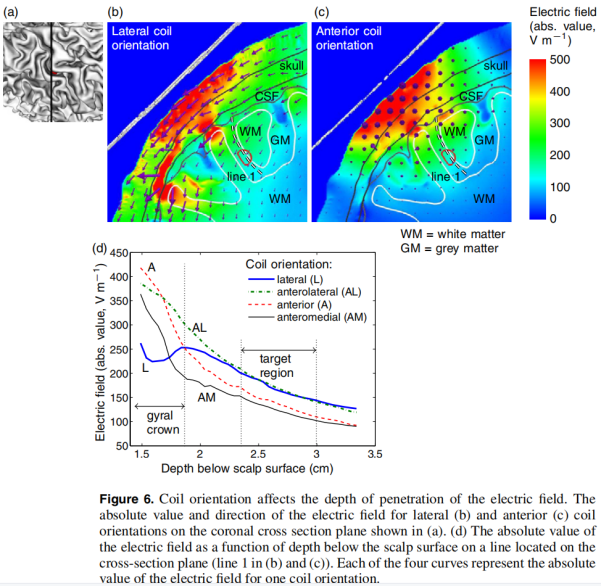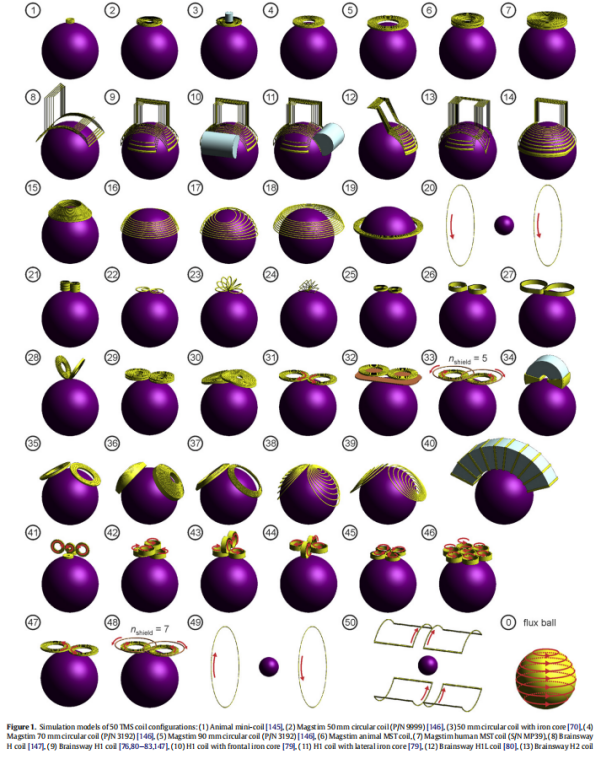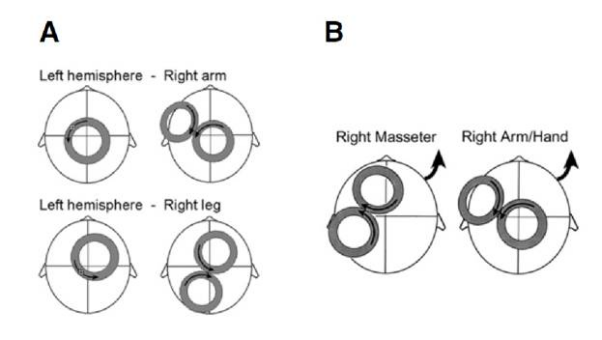Release time :2023-01-06
Source:support@yingchitech.com
Scan:1112
During rTMS treatment, the correct placement of transcranial magnetic stimulation coil is one of the key factors to ensure safe and effective stimulation.
As we all know, transcranial magnetic stimulation instrument is mainly composed of stimulation host, cooling system, stimulation coil, etc. Among them, the main factors that affect the therapeutic effect of TMS are the intensity of stimulation and the type of stimulation coil. However, in the course of treatment, it is essential to correctly place the transcranial magnetic stimulation coil to achieve the best clinical effect.
Today, the transcranial magnetic stimulation (TMS) technology is gradually respected and applied, many researchers have studied the influence of different placement methods of TMS coils on the therapeutic effect.
Ilkka Laakso et al. calculated and studied the induced electric field in multiple coil directions and positions to determine which parts of the brain are affected, and how the sensitivity of motor cortex activation depends on the direction of the electric field. The electric field induced by TMS in two independent anatomical models of the head and brain was calculated by finite element method.

Combined with the previous experimental data, the research results support the hypothesis that the cortex is most sensitive to the field perpendicular to the cortex, but relatively insensitive to the field parallel to the cortex. This is of great significance for targeted therapy of transcranial magnetic stimulation. In order to determine the position and direction of the most effective coil, both biological factors (the direction of the target axon) and physical factors (the intensity and direction of the electric field) must be considered.
Previous transcranial magnetic stimulation (TMS) studies have shown that coil direction (TMS current direction) and muscle activation status (rest or activity) change the excitability of the corticospinal cord and cortex of upper limb muscles. However, the extent to which these factors affect the corticospinal and cortical excitability of lower limb muscles remains unclear.
Brodie J Hand et al. selected 21 young adults (21.6 ± 3.3 years old, 11 women) for research and found that the direction of TMS coil and muscle activation affect the measurement of excitability in the anterior tibial muscle cortex, so they are important considerations in the research of lower limb muscle TMS.
At present, there are about 50 kinds of transcranial magnetic stimulation coils, as shown in the following figure: common round, "8" shaped, tapered, "H" shaped; There are also coils with special shapes such as oval, V-shaped and quadrangle leaf.

Today, we mainly talk about how to place the commonly used circular coil and 8-shaped coil to accurately stimulate and achieve the best therapeutic effect.
The 8-shaped coil is to place two circular coils side by side on a plane. The current direction of one coil is clockwise and the other is counterclockwise. The current direction of the middle connection of the two coils is the same.
When the turns of the coil are added, the magnetic field intensity and direction are also superposed. Therefore, the magnetic induction intensity at the middle junction is the largest, which can focus the stimulation. However, the stimulation area is small, and the stimulation depth is relatively shallow. It is generally used for scientific research and mapping of functional areas that require strict positioning, and it can also be used for treatment.
The circular coil is a coil that has been used since the birth of TMS in 1985. Unlike the figure 8, it has only one current direction. With the same output, it has stronger stimulation effect and larger stimulation area. It is easy to elicit motor evoked potentials and is also suitable for stimulating peripheral nerves. Therefore, it can be used for routine examination and treatment.
Although the spatial focusing effect of the circular coil is not as good as that of the 8-shaped coil, the human head is a spherical arc, and the tangential point between the circular coil and the scalp has the largest stimulation intensity, which also has a certain focusing effect.
Theoretically, the magnetic induction intensity of the hollow point in the middle of the circular coil should be the largest, but in fact it has the smallest stimulation to the cerebral cortex. This is because the magnetic line of force in the middle of the coil cannot cut into the inside of the skull, and the skull cannot extend to the small round hole area to receive stimulation. Therefore, the magnetic induction intensity of the circular coil at the center is weak, while the magnetic induction intensity around the outer third of the center is strong.
It is precisely because the 8-shaped coil and circular coil have the above characteristics that their different characteristics must be considered for proper placement during clinical treatment or scientific research, as shown in the following figure:

No matter how the stimulation target changes, the placement of the coil must follow the characteristics of the stimulation coil:
Circular coil placement: aim at the stimulus target at a position one third from the center of the circle
8-shaped coil placement: use the center of the 8-shaped coil to align with the stimulus target
[1] Ilkka Laakso1,3, Akimasa Hirata1 and Yoshikazu Ugawa2,Effects of coil orientation on the electric field induced by TMS over the hand motor area,doi:10.1088/0031-9155/59/1/203;
[2] B.J. Hand, G.M. Opie, S.K. Sidhu, J.G. Semmler, TMS coil orientation and muscle activation influence lower limb intracortical excitability, Brain Research (2020), doi: https://doi.org/10.1016/j.brainres.2020.147027;
[3] Deng Z, Lisanby S, Peterchev A. Electric field depth-focality tradeoff in transcranial magnetic stimulation: simulation comparison of 50 coil designs. Brain Stimul, 2013, 6(1): 1-13.
[4] Hess, C. W. (2005). Magnetic Stimulation in Clinical Neurophysiology (Second Edition). Philadelphia, Butterworth-Heinemann: 83-103.
[5] Walsh V, et al., Transcranial Magnetic Stimulation: A Neurochronometrics of Mind. Bradford Book, 2003